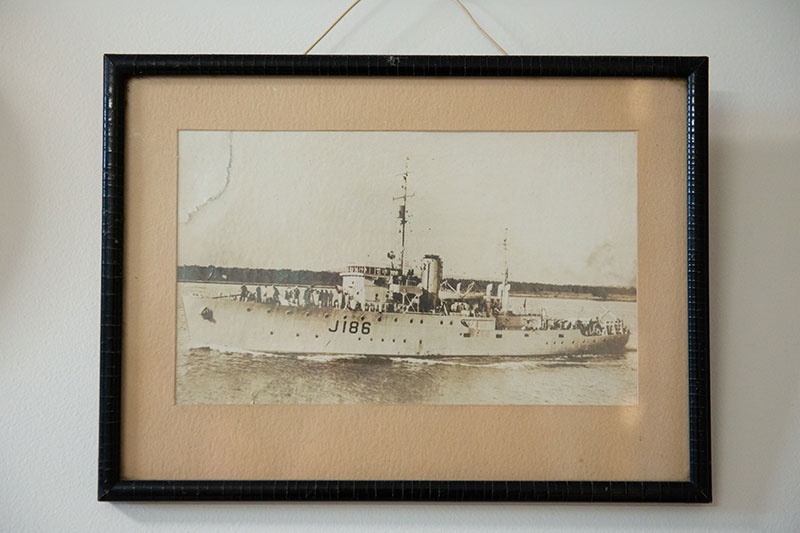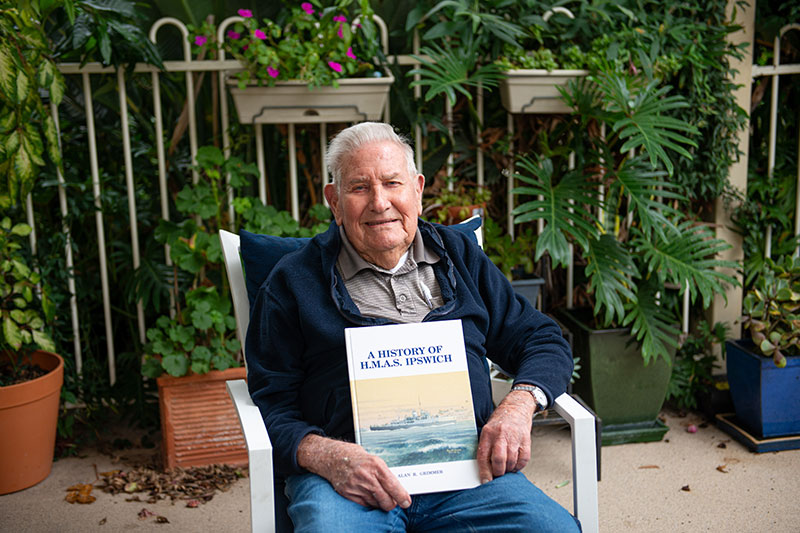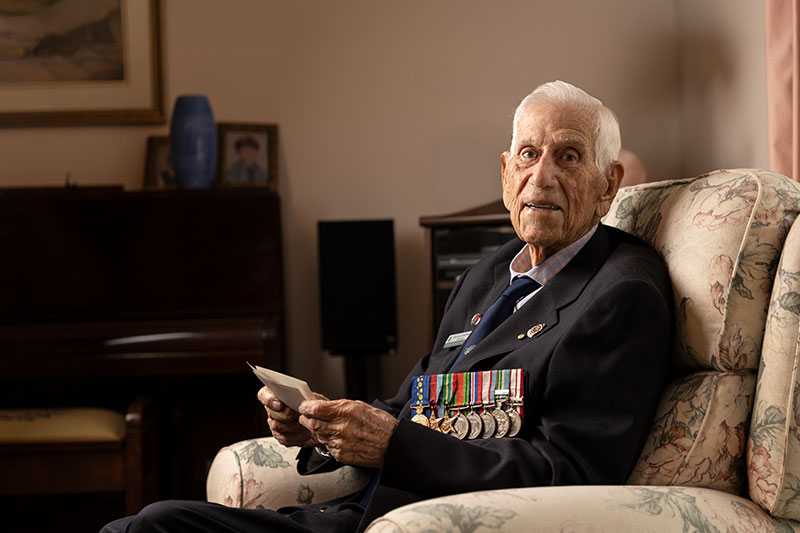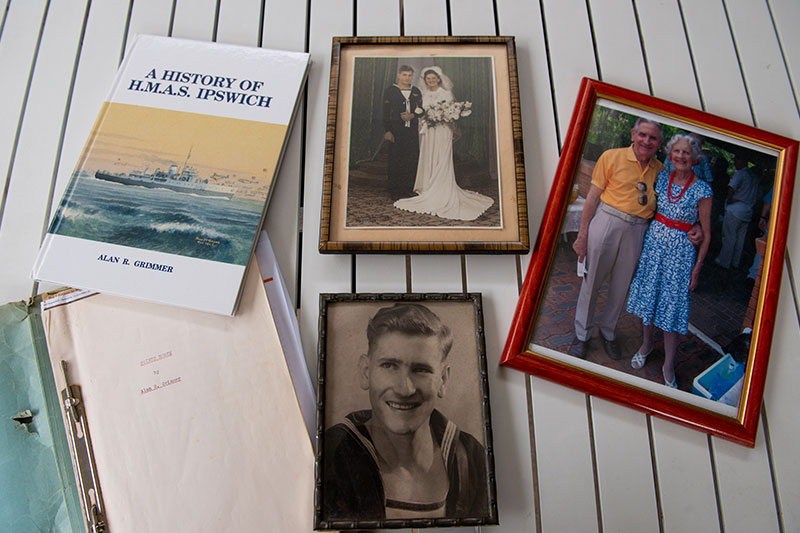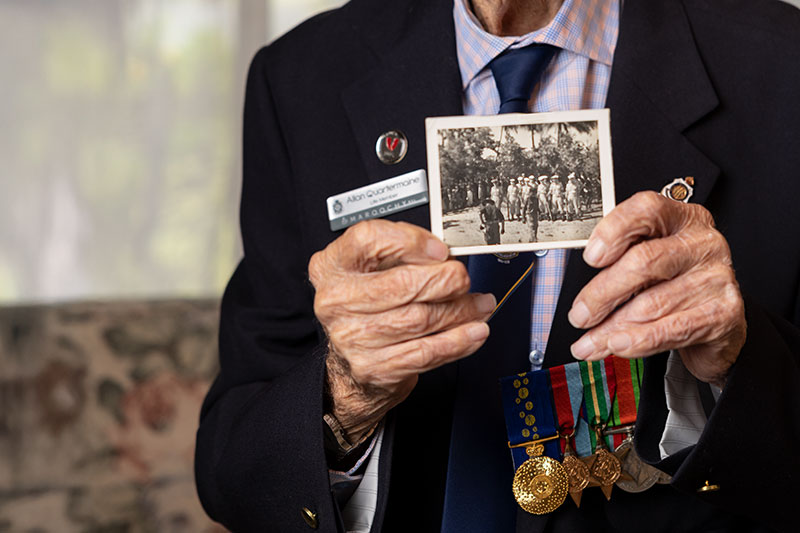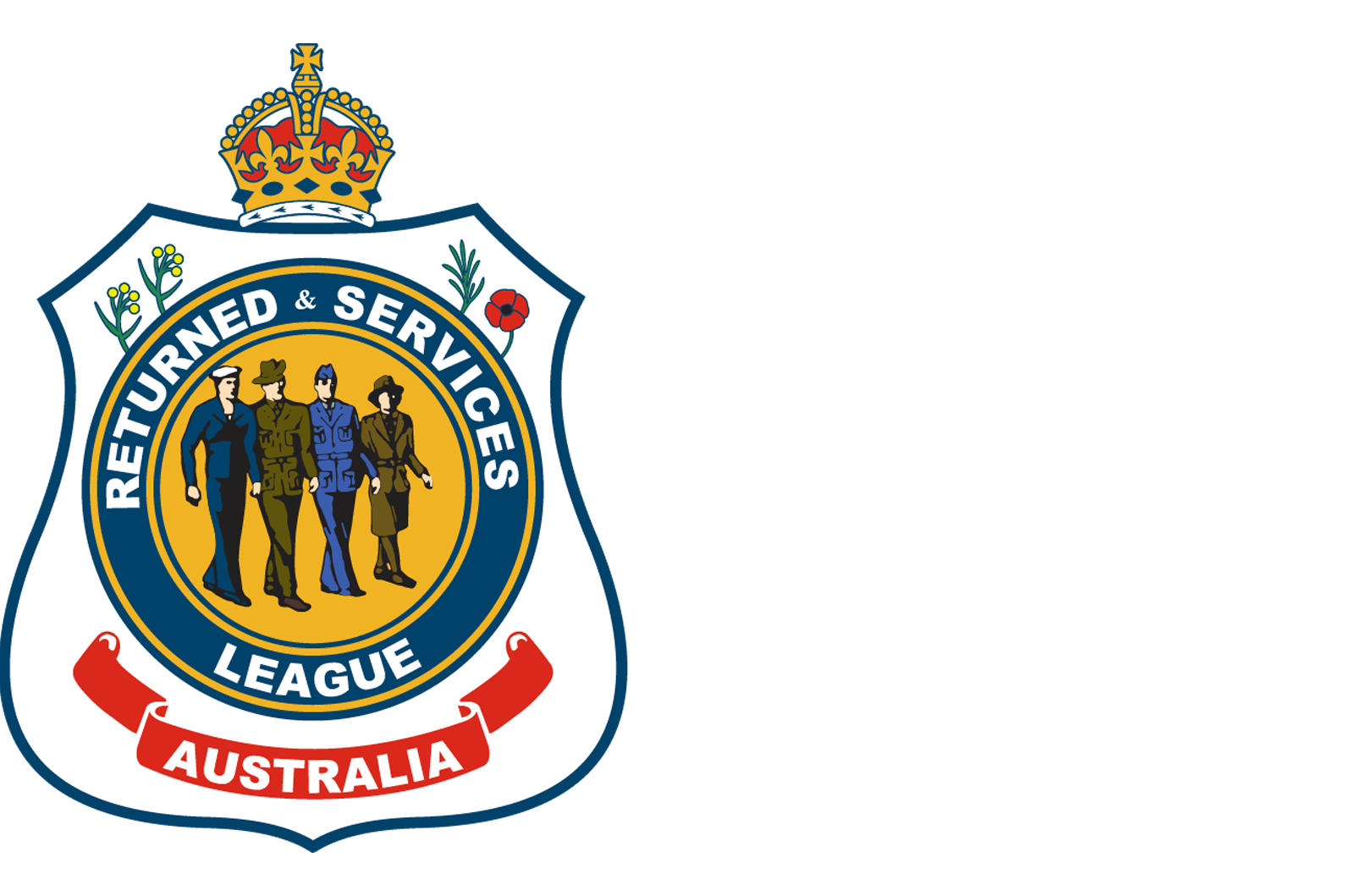4 February 2025
Chronicles aboard Australian Corvettes during World War II
It was 1939. World War II had begun and the need for suitable minesweeping and escort vessels for the British Navy and Royal Australian Navy (RAN) became apparent.
Soon after the start of WWII, an order was placed for the Australian Government to construct 60 minesweepers – commonly known as Corvettes – with anti-submarine and escort functionalities. But it wasn’t until 1942 that construction accelerated after Germany commenced its anti-shipping campaign in and around Australian waters, and Japan entered the war.
HMAS Ipswich
Navy veteran and renowned author and artist John Bastock described the Corvettes as “handy and reliable, and in addition to minesweeping, patrol and escort work they were employed on an endless variety of tasks including the carrying of troops and stores, participation in bombardments and assault landings, surveying and towing operations. In short, they were maids-of-all-work".
HMAS IPSWICH
In June 1942, 18-year-old, Townsville-born Alan Grimmer was sent to the newly built Corvette, HMAS Ipswich.
“My father was in the Merchant Navy and hearing his stories was one of the many factors that inspired me to join the Australian Navy,” Grimmer explains.
“I always wanted to go out to sea, so originally I joined the Sea Scouts in Townsville, and I liked what I heard. I learned how to talk Navy and understand what things go on at sea.
“Then the war broke out when I was 15 and I thought to myself that this was my chance. If the war was still on when I was of age, and they needed me, I’ll join the Navy – which was an unusual thing to do because Townsville is not a maritime town. So, I was somewhat unique.”
Alan Grimmer
HMAS Ipswich was commissioned at Brisbane and saw an extensive career during WWII. Grimmer was aboard the ship for most of her service and took part in escort and patrol campaigns in the western Indian Ocean and the Mediterranean, including the Allied invasion of Sicily. Within her first 18 months, the ship covered 61,360 miles before going back to the Indian Ocean on escort duty between India and Sri Lanka.
In July 1944, following further service in the Indian Ocean, HMAS Ipswich proceeded to Australia for refit. Grimmer left the ship and, after completing a course in torpedoes, joined HMAS Diamantina, which is now preserved in dry dock in the Queensland Maritime Museum.
HMAS KIAMA
In January 1944, approximately 90 crewmen boarded the HMAS Kiama. Among them was 20-year-old, Ayr-born Allan Quartermaine.
“Growing up, I heard stories from one of my uncles who was very keen about the Navy. Those stories intrigued me and made me want to join,” Quartermaine recalls.
“But my father wouldn’t sign my papers to join up unless I was able to get a job to come back to. So, I applied for three banking jobs and got into the Commonwealth Bank.
“After working for a bit, I enlisted into the Navy when I turned 17. After training and a period in Darwin, I was sent to HMAS Kiama.”
Allan Quartermaine
During her operational wartime career, HMAS Kiama was primarily involved in escorting duties, troop transport operations and anti-submarine patrols in New Guinea waters.
“One memory that has stuck with me was when we were minesweeping,” Quartermaine reflects.
“I was on the upper deck, and it was around two o’clock in the afternoon. All of a sudden there was this griding noise coming from under the boat and I thought to myself, ‘I hope that’s not a mine’.
“Well, we didn’t know it at the time, but it thankfully wasn’t a mine; it was a shipwreck in the harbour. And we just happened to go over the top of it.”
In her two years and two months of service, HMAS Kiama steamed 60,882 miles.
WAR IS OVER
Both Grimmer and Quartermaine were relieved more than anything when they heard the war was over.
“I didn’t feel any jubilation or exhilaration in the idea that the war was finished,” Grimmer says. “I think we’d been so used to the war being there day in and day out for the last six years that it was a relief more than anything else.”
“I can’t remember exactly where we were at sea, but I remember being told and feeling relief. Everyone was pleased about it,” Quartermaine adds.
“It was then a matter of preserving yourself until you got out.”
Both men were also involved in some of the Japanese surrender ceremonies that were conducted.
“We were given the job of doing the surrenders in Naru, Ocean Islands and some in Bougainville,” Grimmer says.
“The Japanese came aboard the ship and we all stood around as they surrendered their swords and signed the papers.”
“Some of us even collected souvenirs from the Japanese,” Quartermaine adds.
“I had a Japanese sword for years – always carried it around with me. I ended up giving it to Maroochydore RSL Sub Branch.”
BACK TO CIVILIAN LIFE
Grimmer and Quartermaine had different experiences transitioning to civilian life.
As soon as Grimmer returned to Townsville, he immediately joined Townsville RSL Sub Branch. But as Townsville was not a maritime town, Grimmer didn’t find solace at the local Sub Branch at the time.
“Most of the veterans were Army, and some Air Force. I was the only Navy veteran up there,” Grimmer explains.
“I went to one or two meetings, but these men only reminisced about their experience in the Army. I felt very, very lonely.”
After retiring, Alan Grimmer wrote a book about HMAS Ipswich
Grimmer then decided to focus on getting back to work and becoming a civilian, suppressing all Navy memories.
“I took myself aside one day and said, ‘Alan, if you want to be a civilian now, be a civilian. Don’t try to live your life that you’ve just done for the last four years’. I didn’t want to sit around and retell stories to those who wouldn’t understand. I had a job to do and a house and that kind of thing,” he says.
“That went well until 1972, 30 years after the HMAS Ipswich was commissioned and I was invited to a reunion. Everyone came from all over Australia. To see those blokes and the changes that they had made over the years, it was marvellous. My idea of putting the memories into the background didn’t work so well after that, and I couldn’t be more grateful.”
After Grimmer retired, he wrote and published a book about his experience, titled: A History of HMAS Ipswich.
“I had no idea how to write a book, so I just poured my memories out onto a piece of paper and kept going, researching to see that all the dates were right and things like that. I thoroughly enjoyed writing it, and the books sold like hot spuds!”
Today, Grimmer resides in Brisbane and is a member of Kenmore-Moggill RSL Sub Branch – which he joined in 1971.
When Quartermaine returned from the war, he was thankful for his father’s advice and returned to Ayr to work at the bank.
“It was comforting to have work to go back to after service,” he says.
“During my career, I ended up working in seven different branches in Queensland and two in New South Wales.”
Quartermaine also joined the RSL in Ayr straight after his return from service. He later joined Maroochydore RSL Sub Branch, where he’s now been a member for more than 35 years.
Both Quartermaine and Grimmer look back fondly on their Navy service
“This was one of the things about the RSL; if you had a problem, you could go to some of the RSL blokes who had an understanding of what you were talking about. I suppose you could say there’s a bond there.”
Looking back on their service for the country, Grimmer and Quartermaine – now a 78-year RSL member and a Life Member, respectively – express gratitude for their time in the RAN.
“Sometimes when you join a ship, you work 20 or 24 hours a day, seven days a week – no holiday or nothing. It was hard work, but it was the greatest thing in my life. It made a man out of me,” Grimmer says proudly.
“Looking back, it’s the sort of experience that you could never anticipate,” Quartermaine adds.
“There’s a bond that builds up amongst the ship’s company. Everyone looks after each other; there’s no space for ill feelings. It’s very important to have that kind of friendship.”
Additional information was sourced from the Royal Australian Navy website and the Naval Historical Society of Australia.

